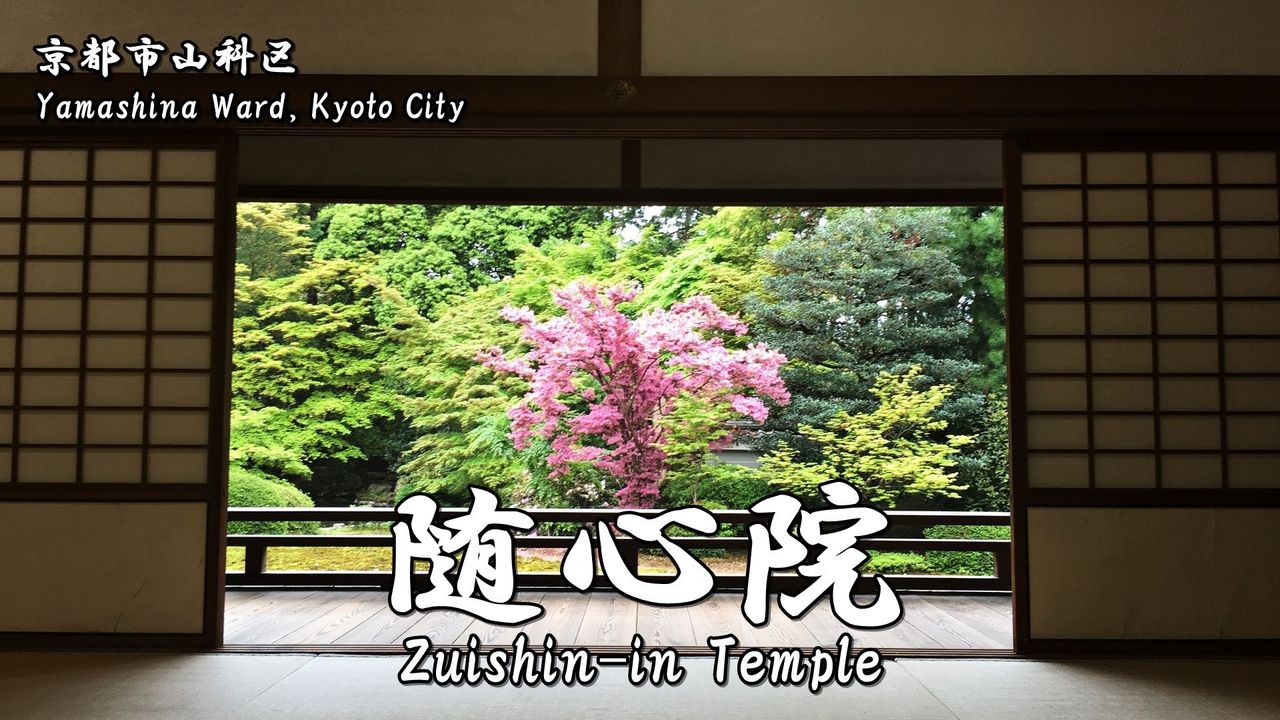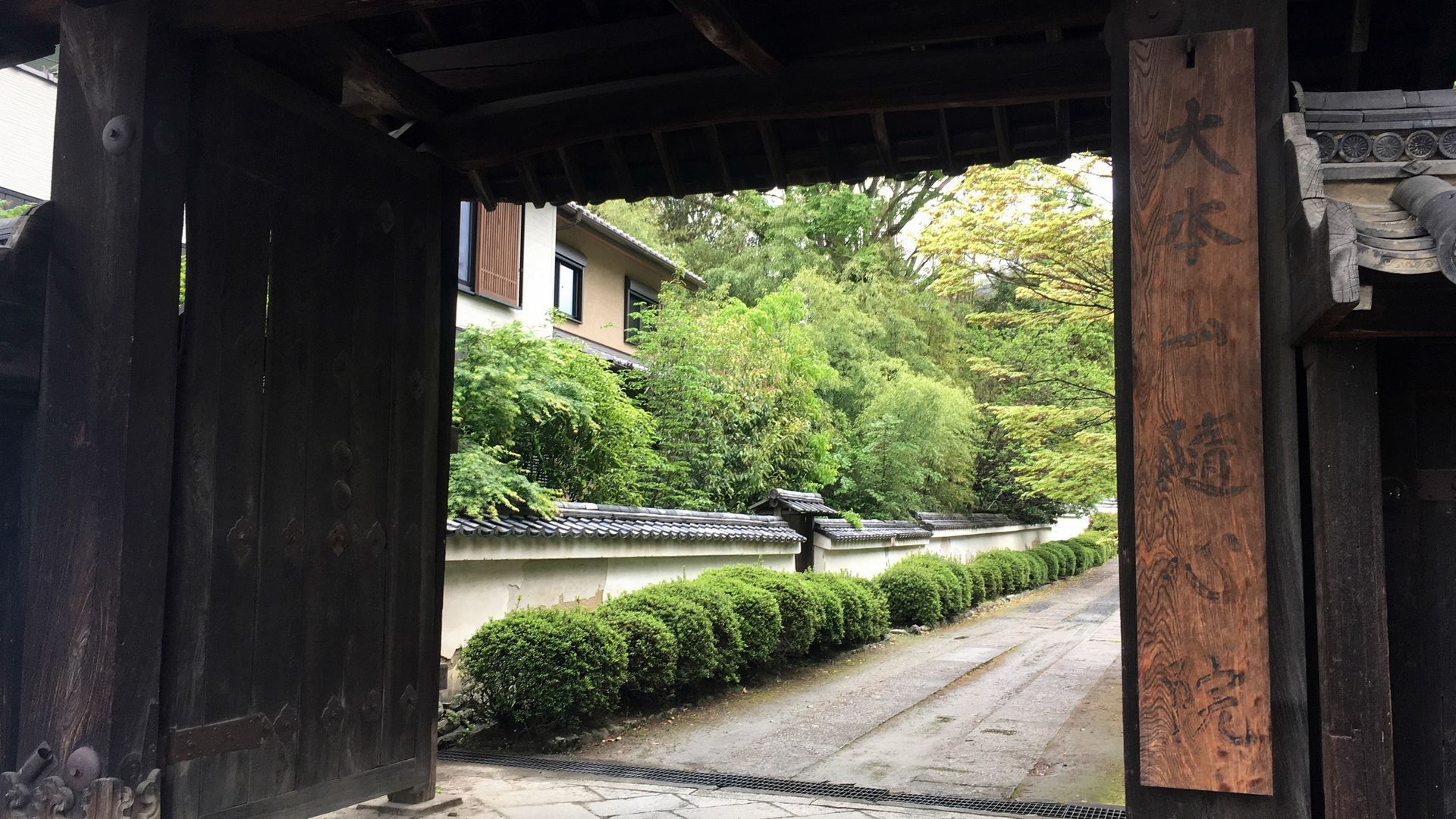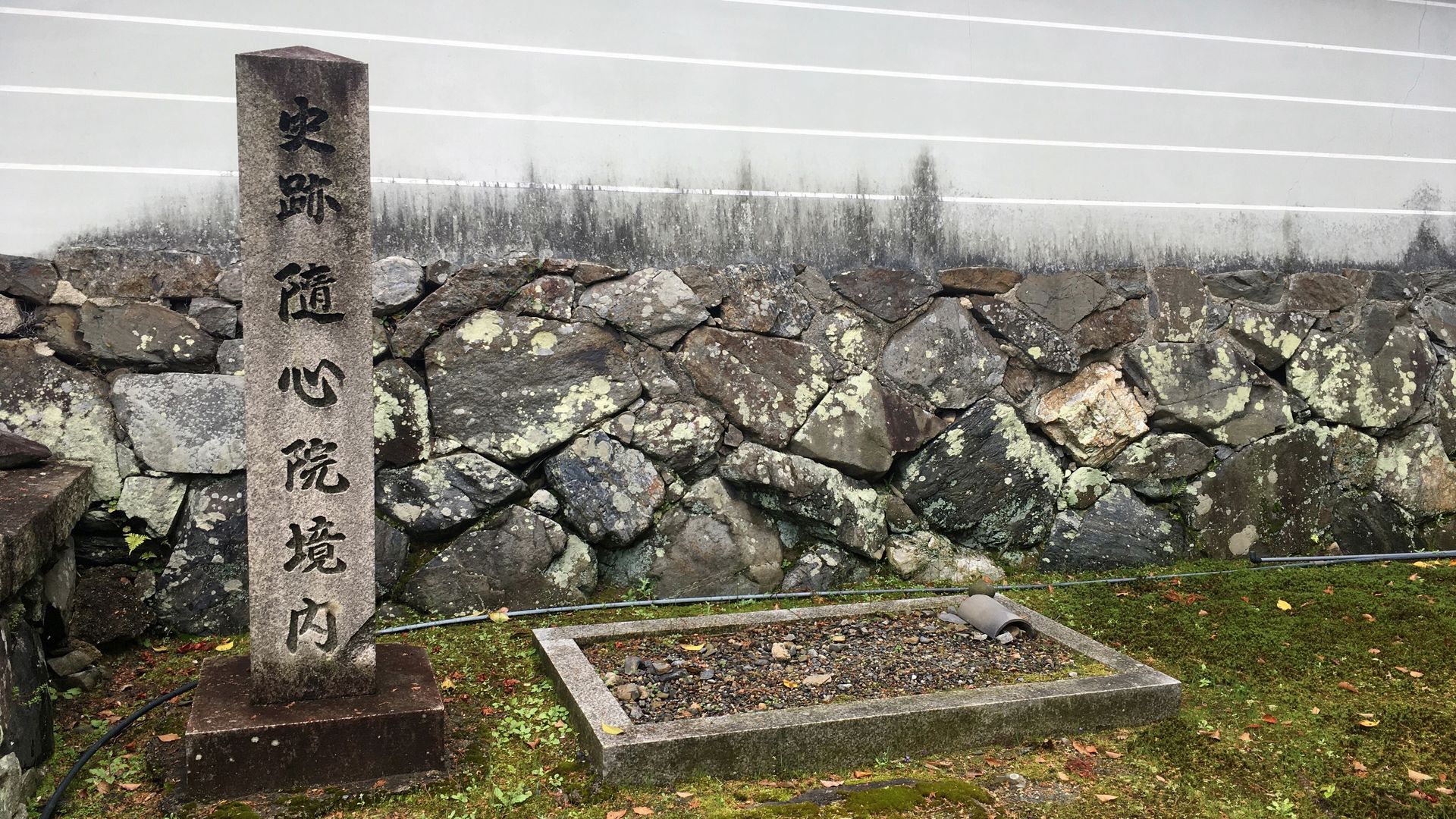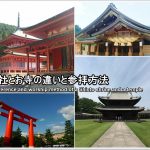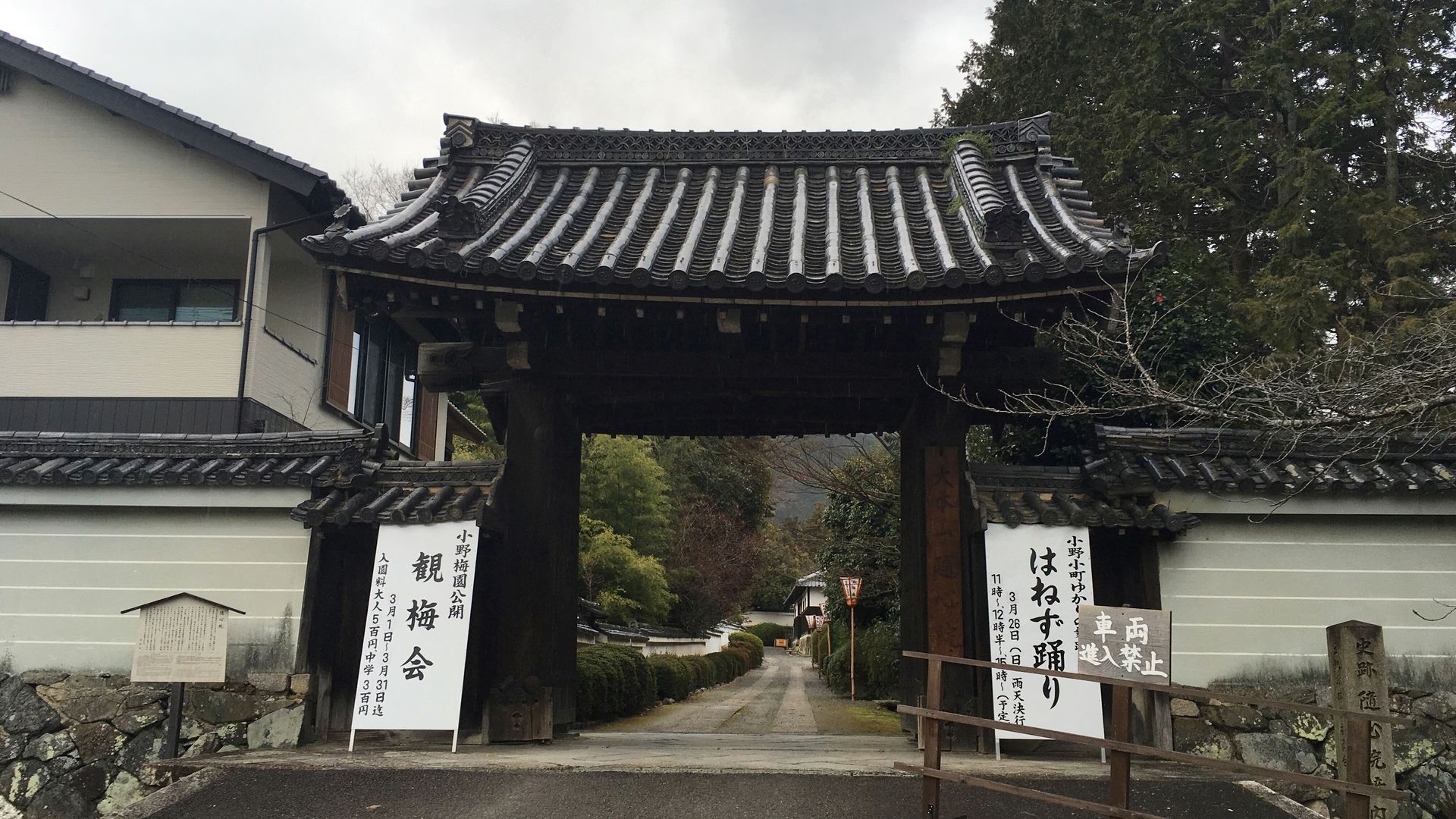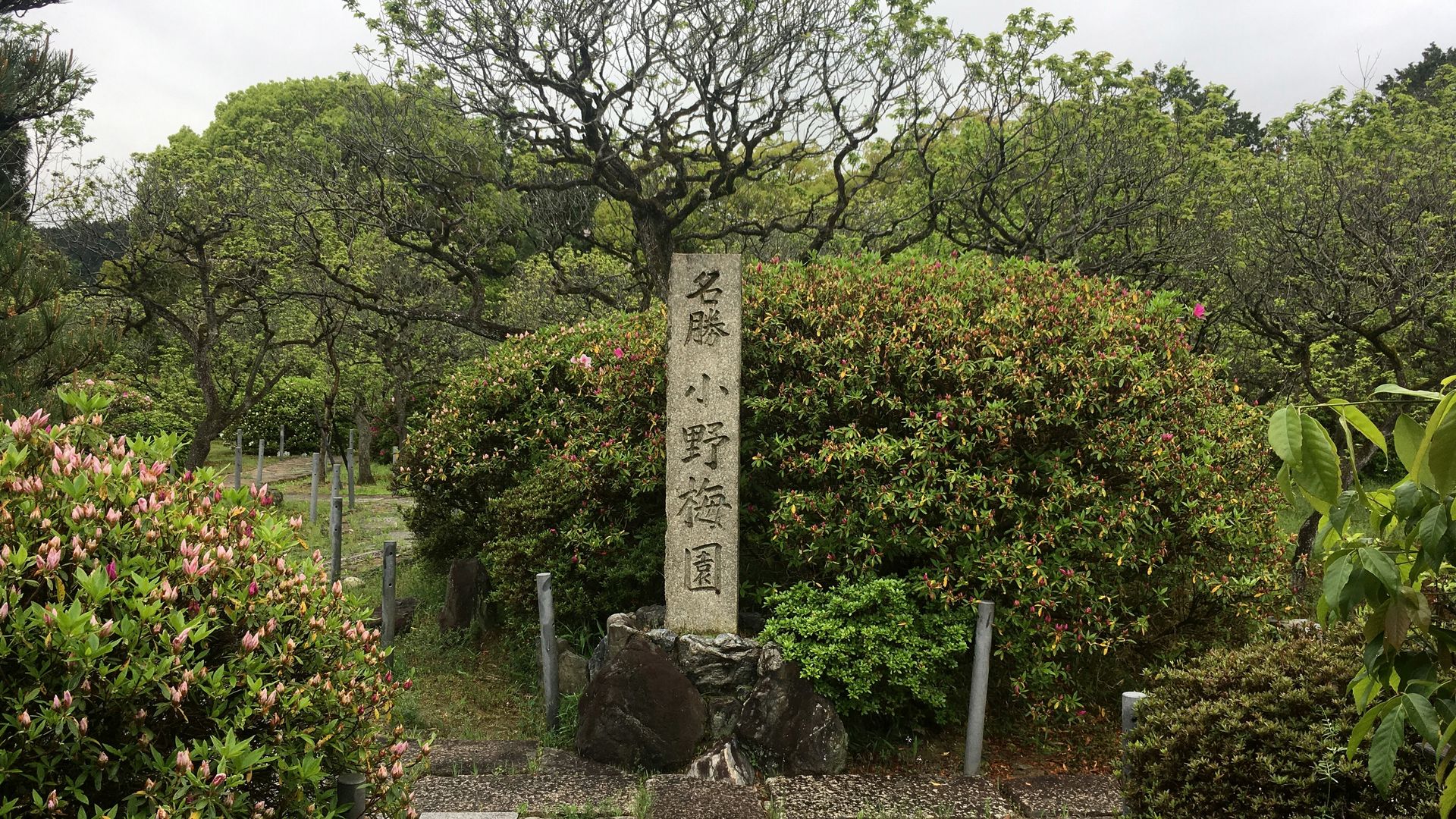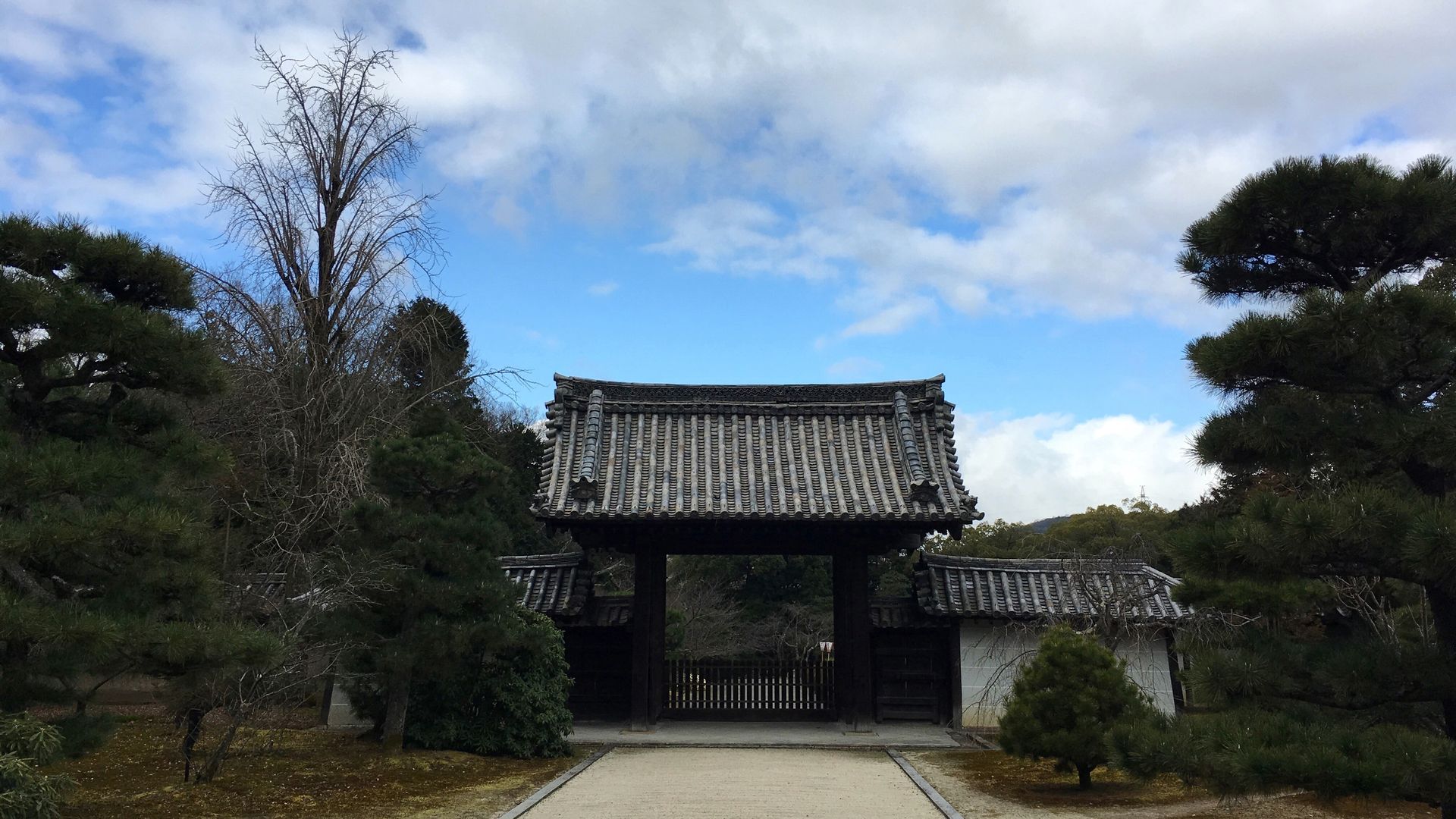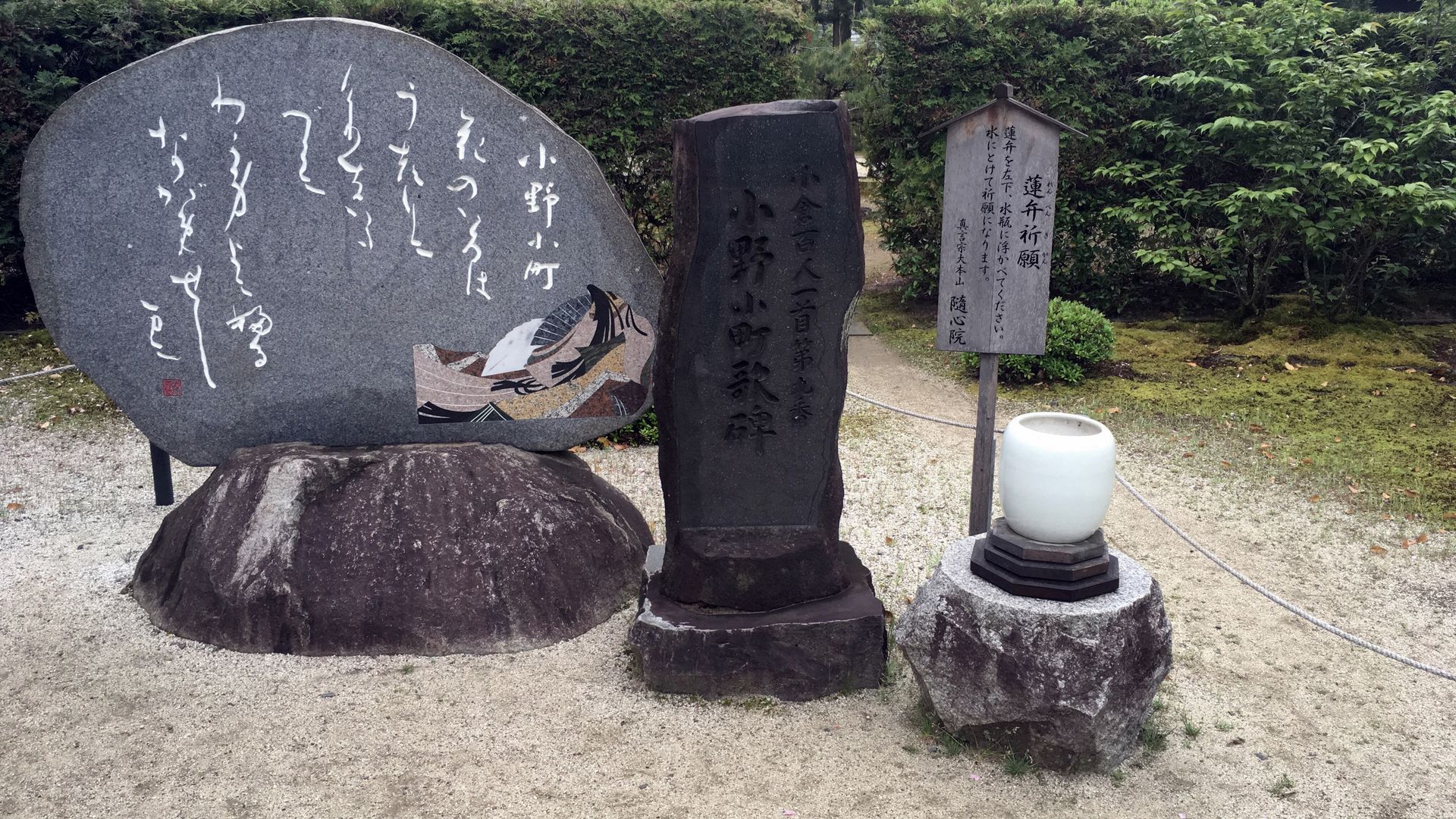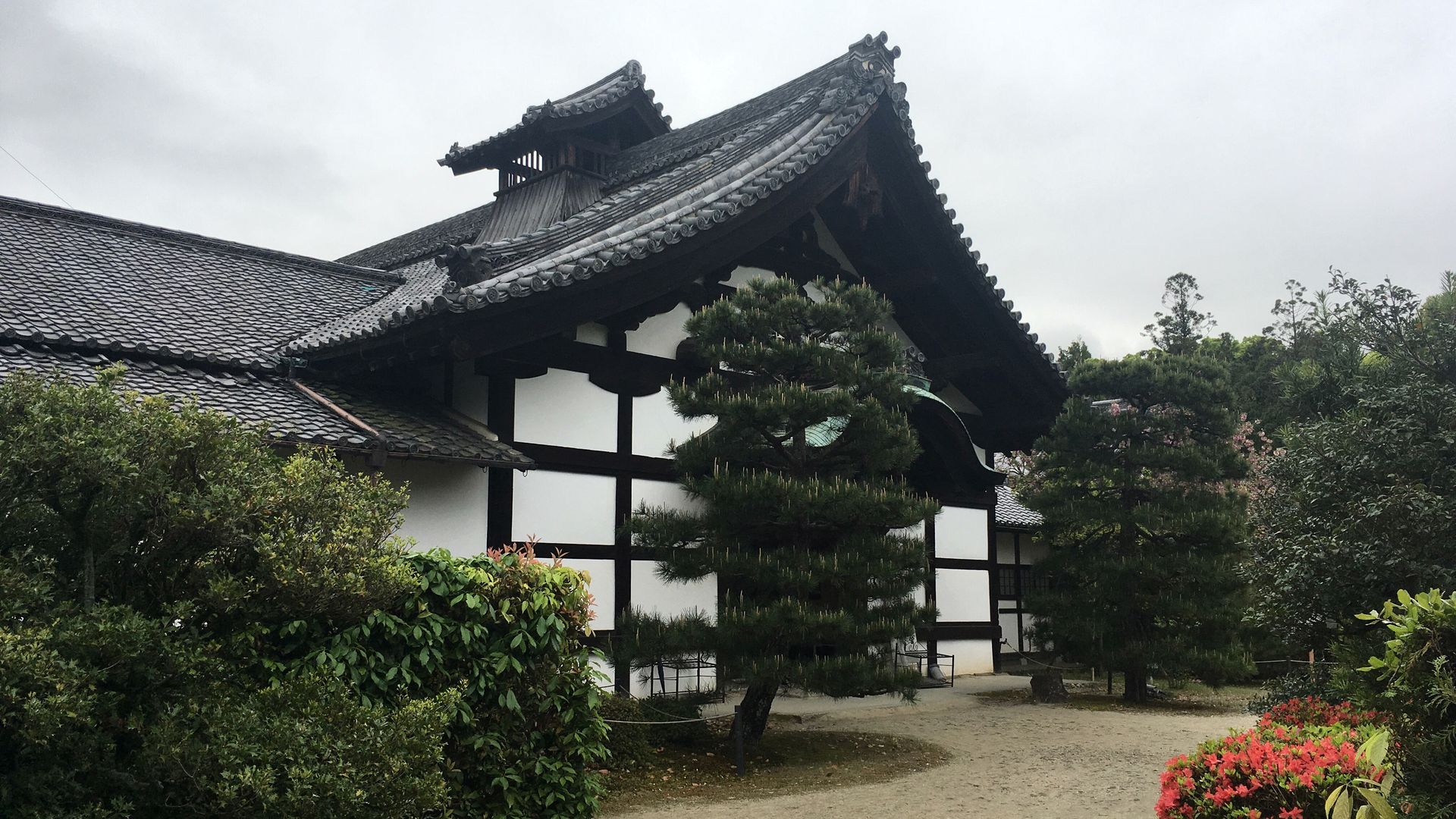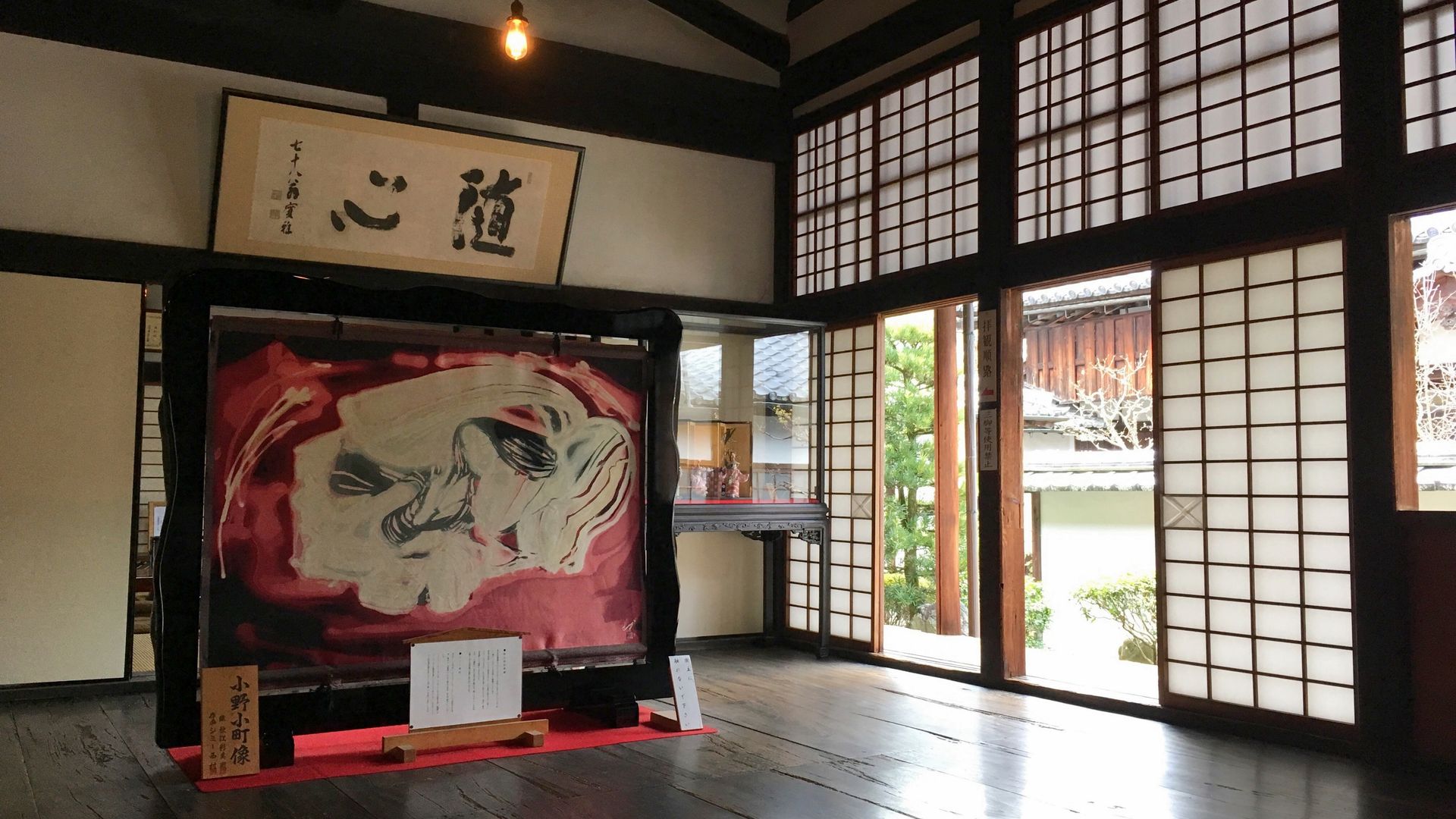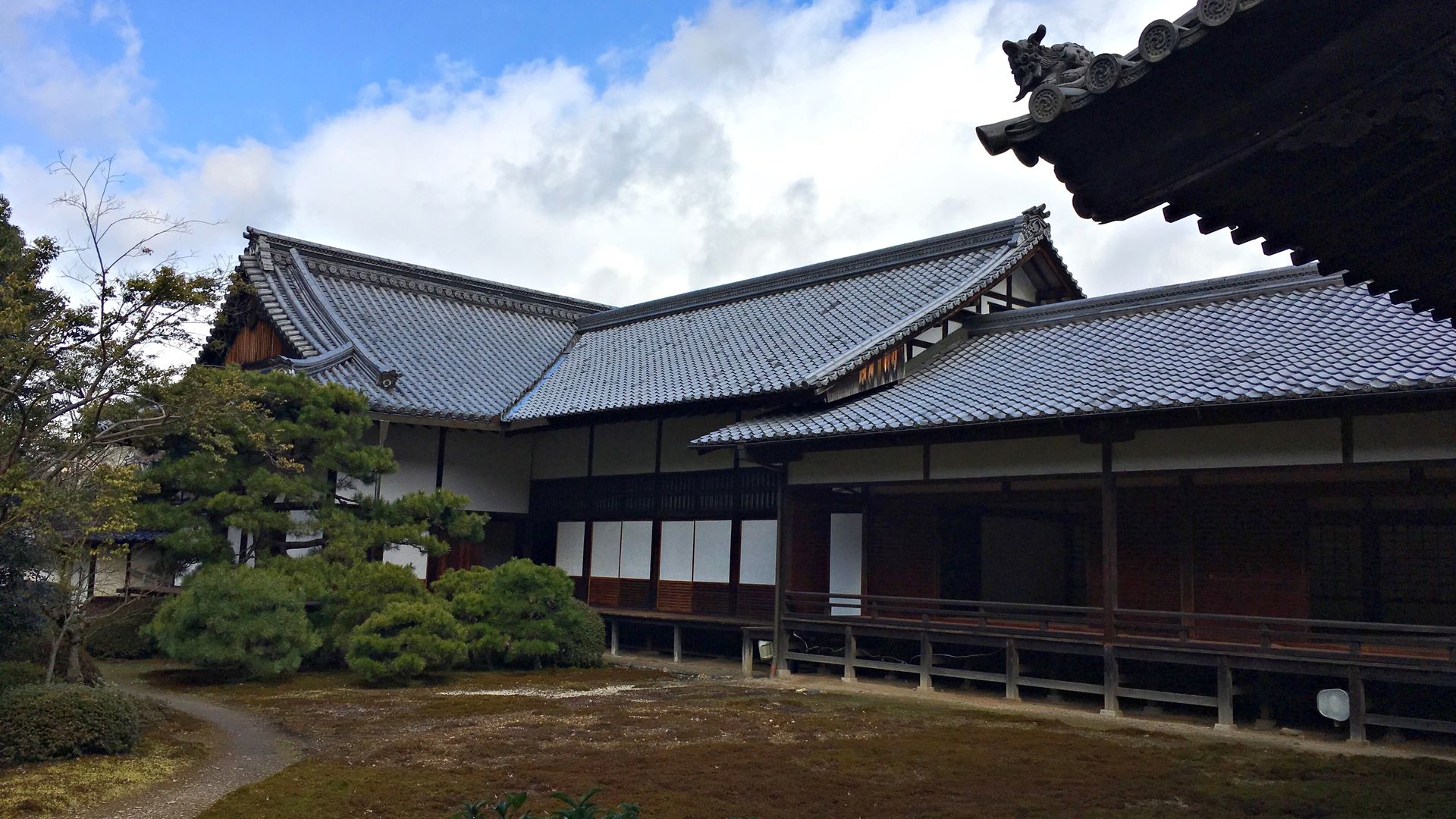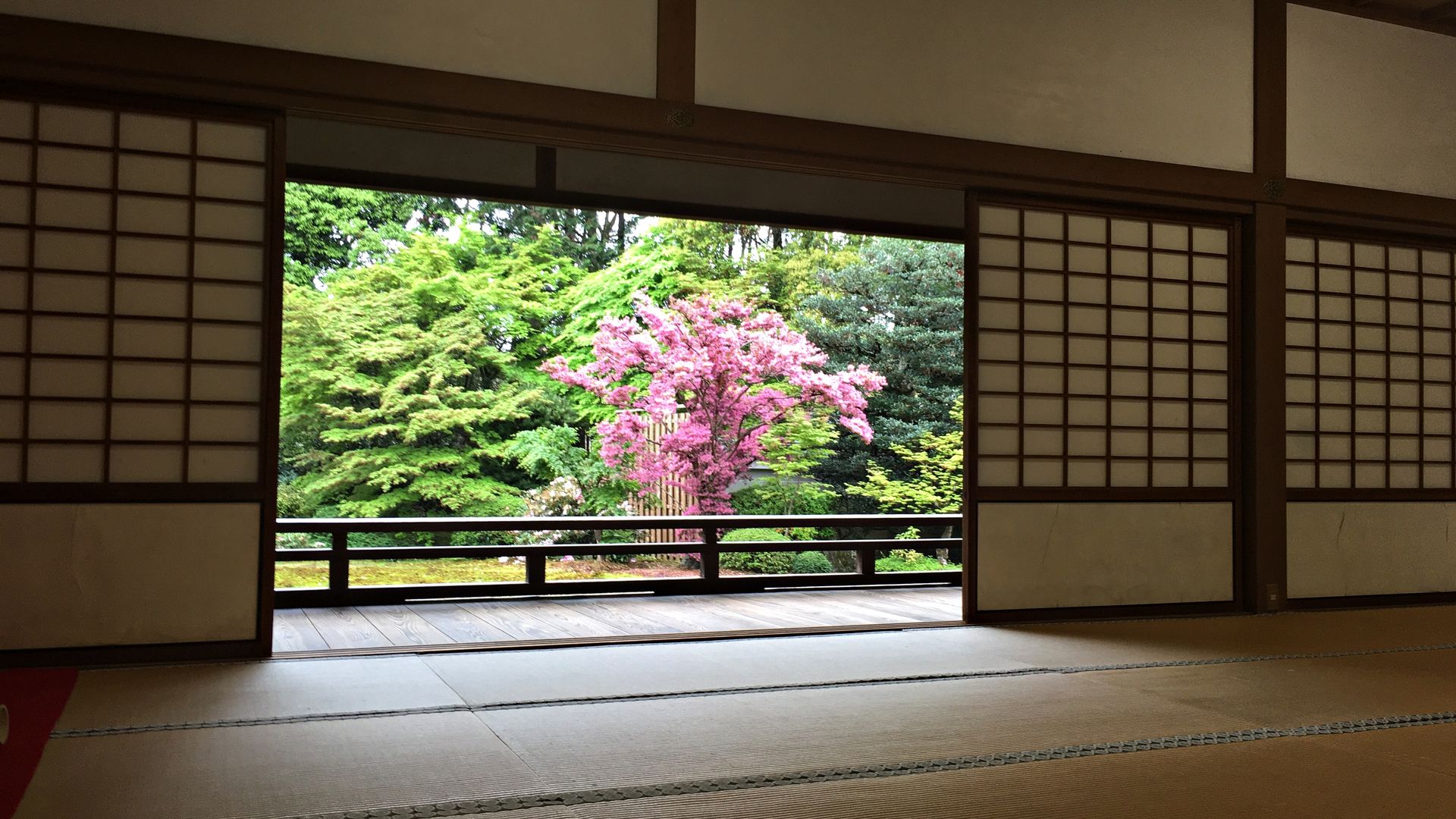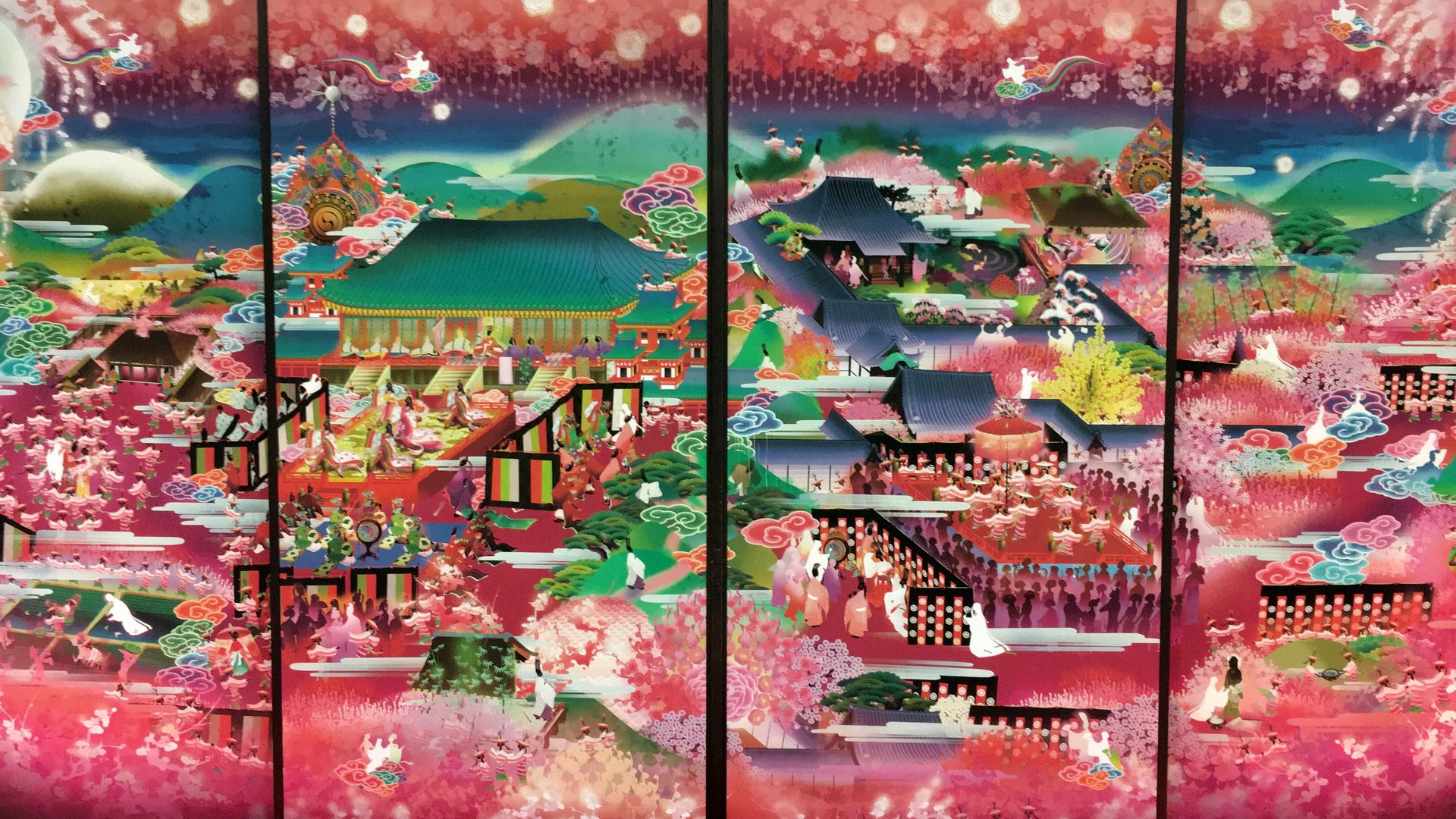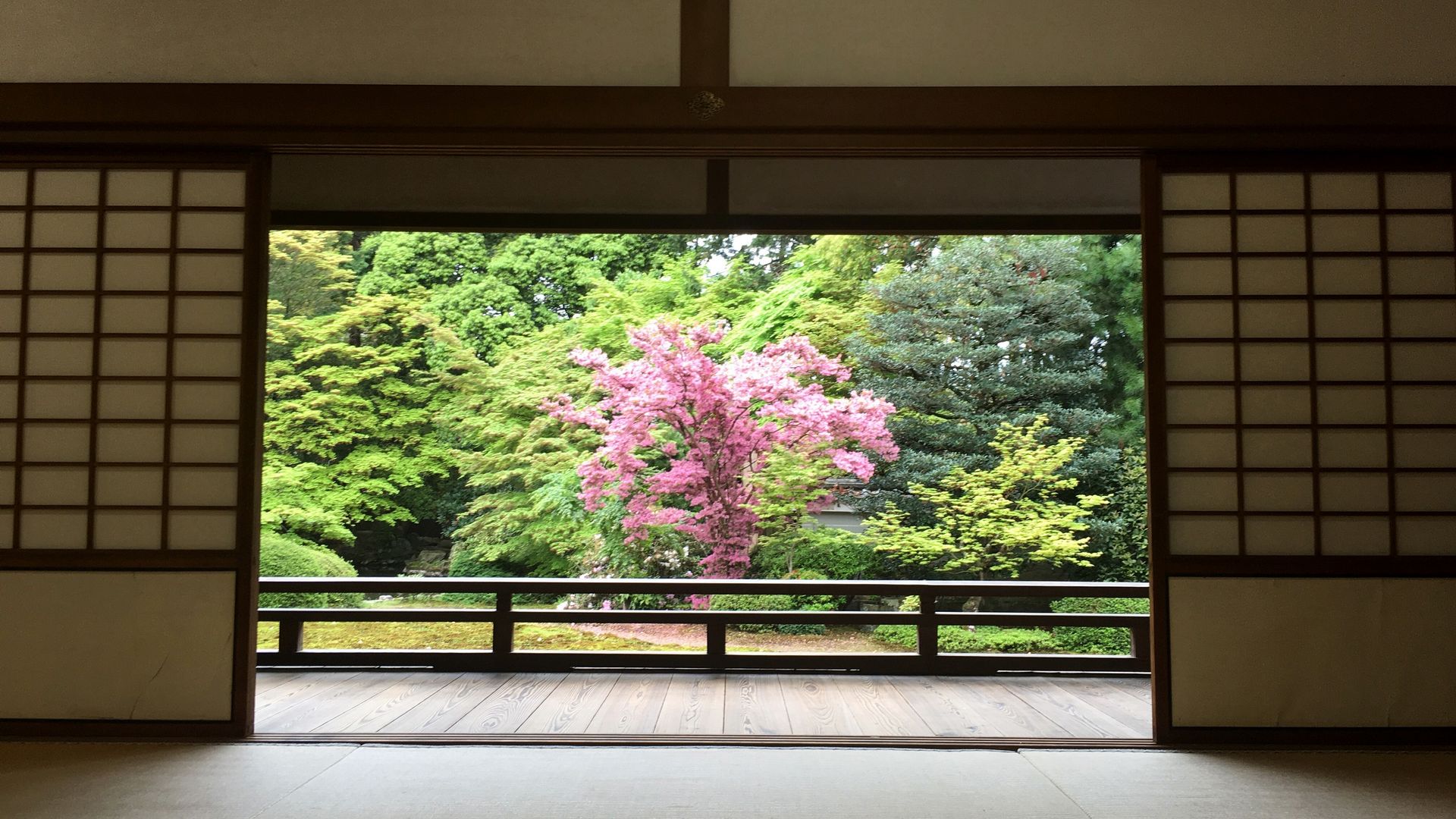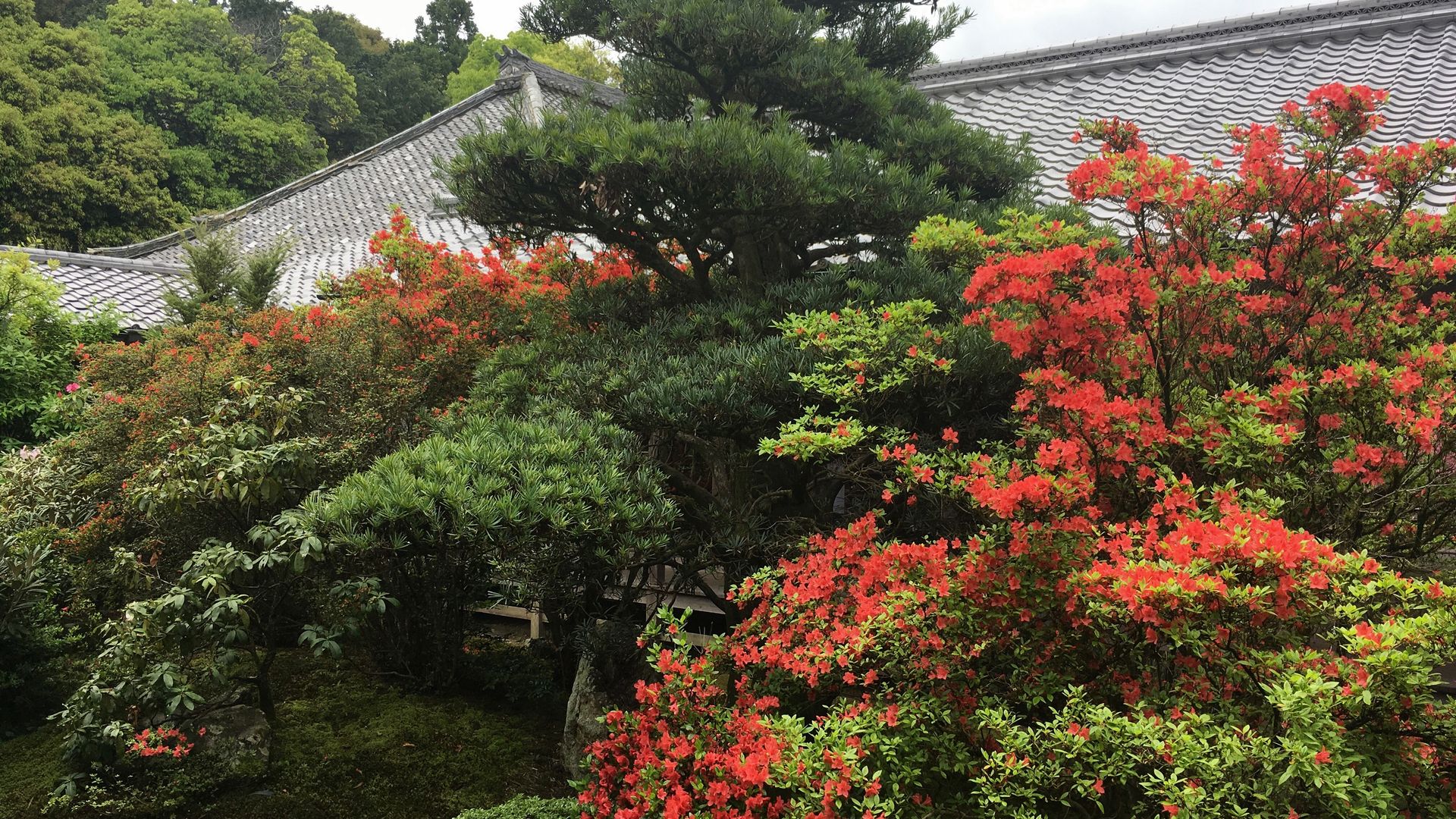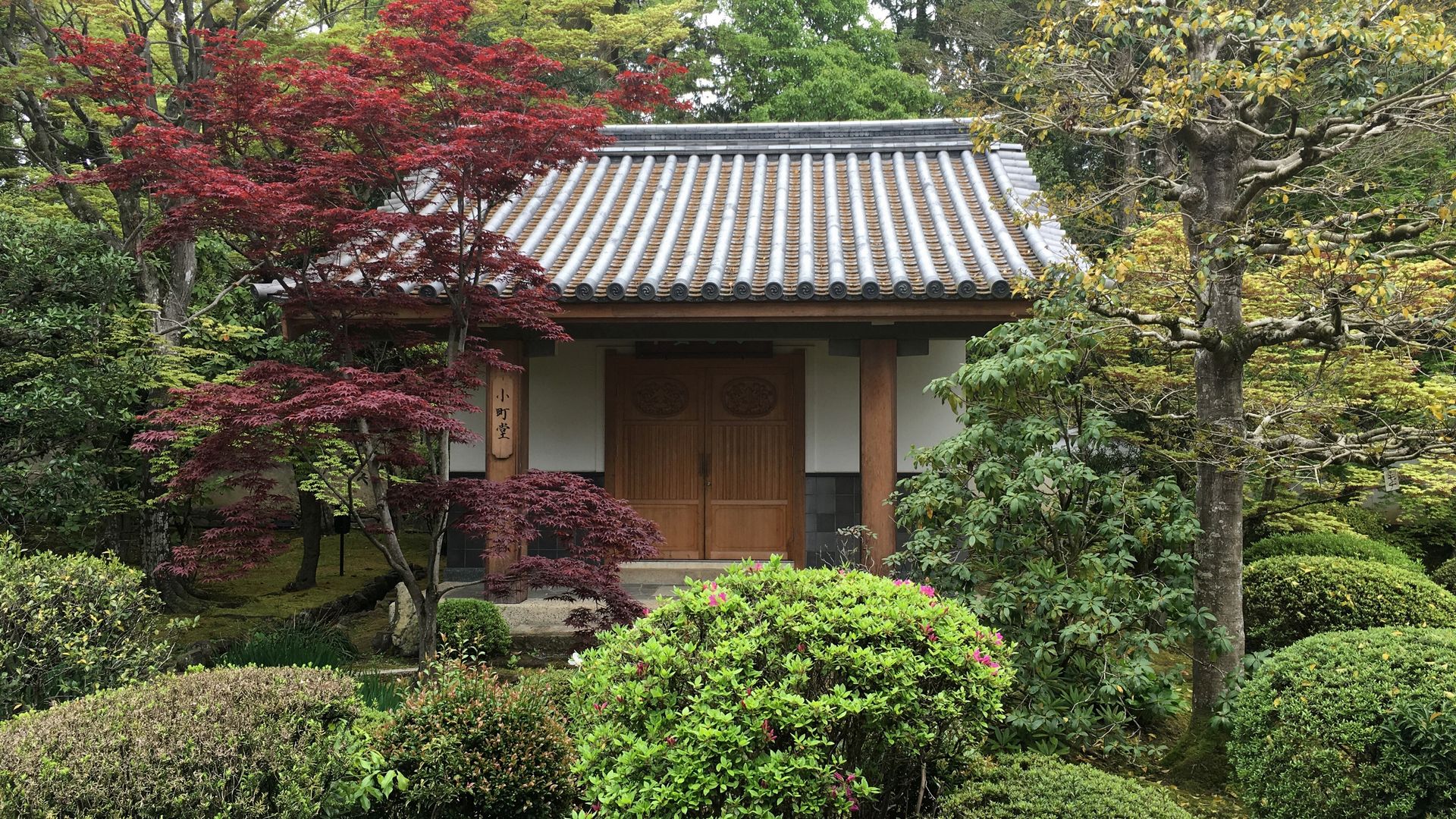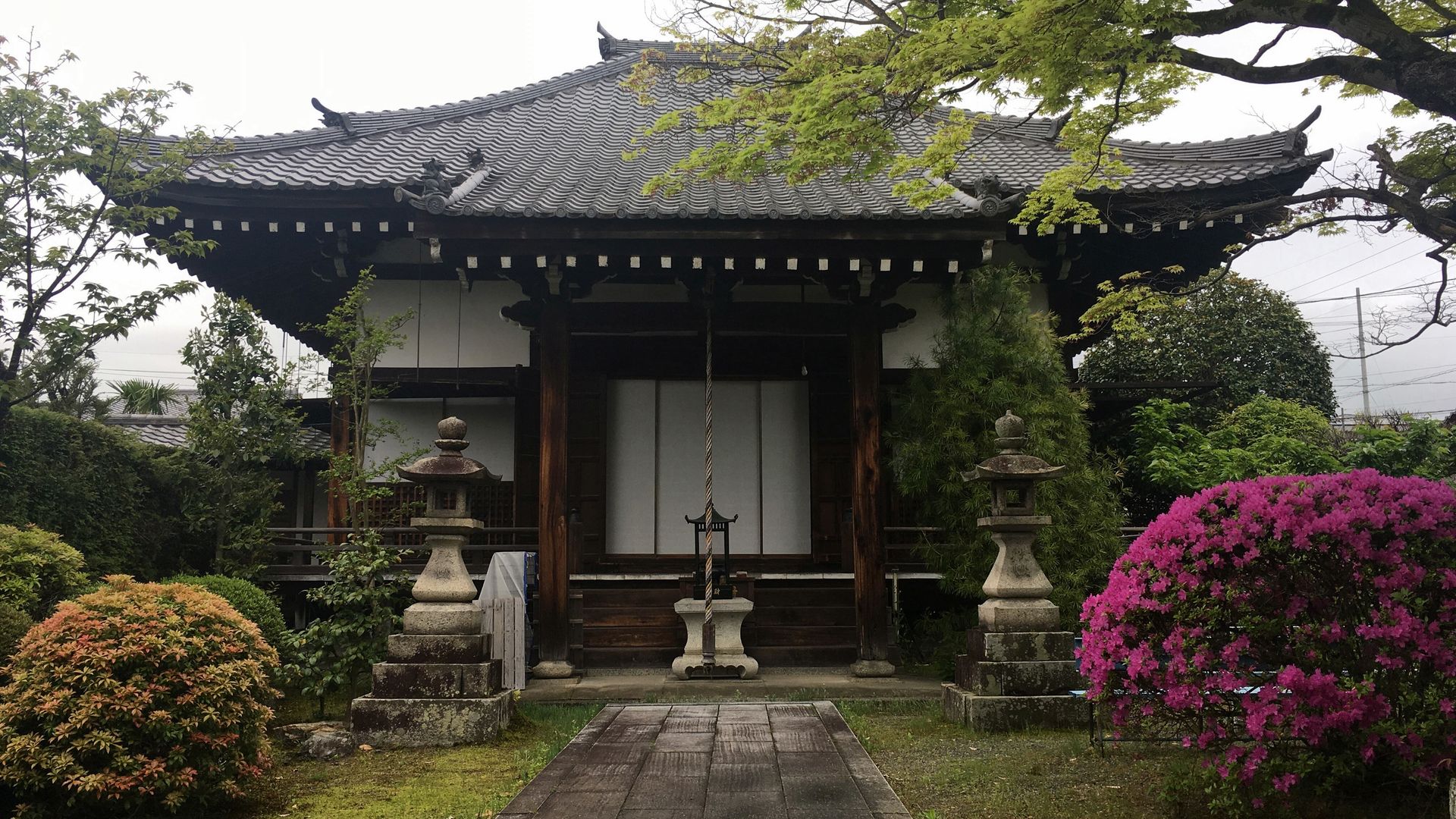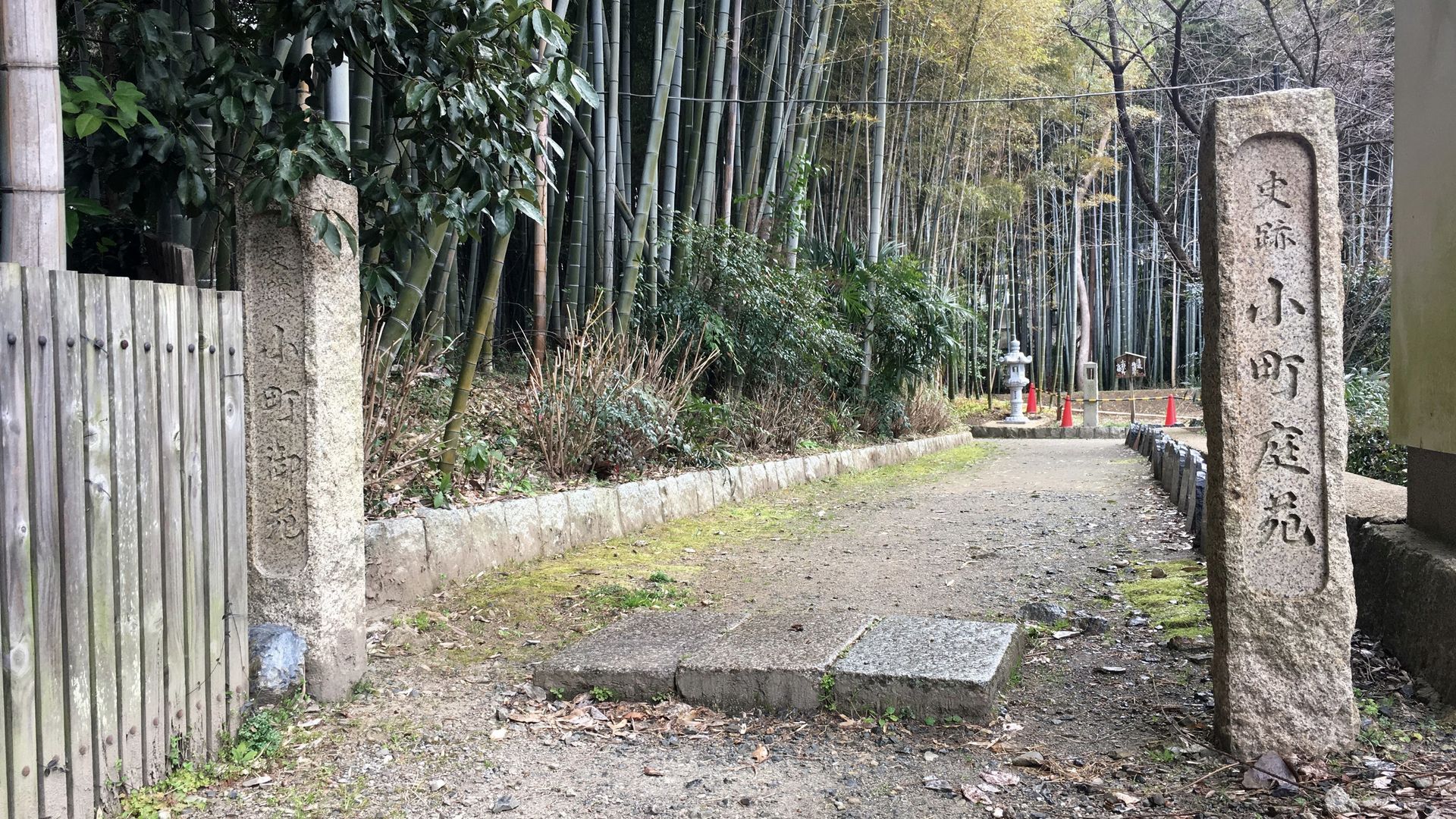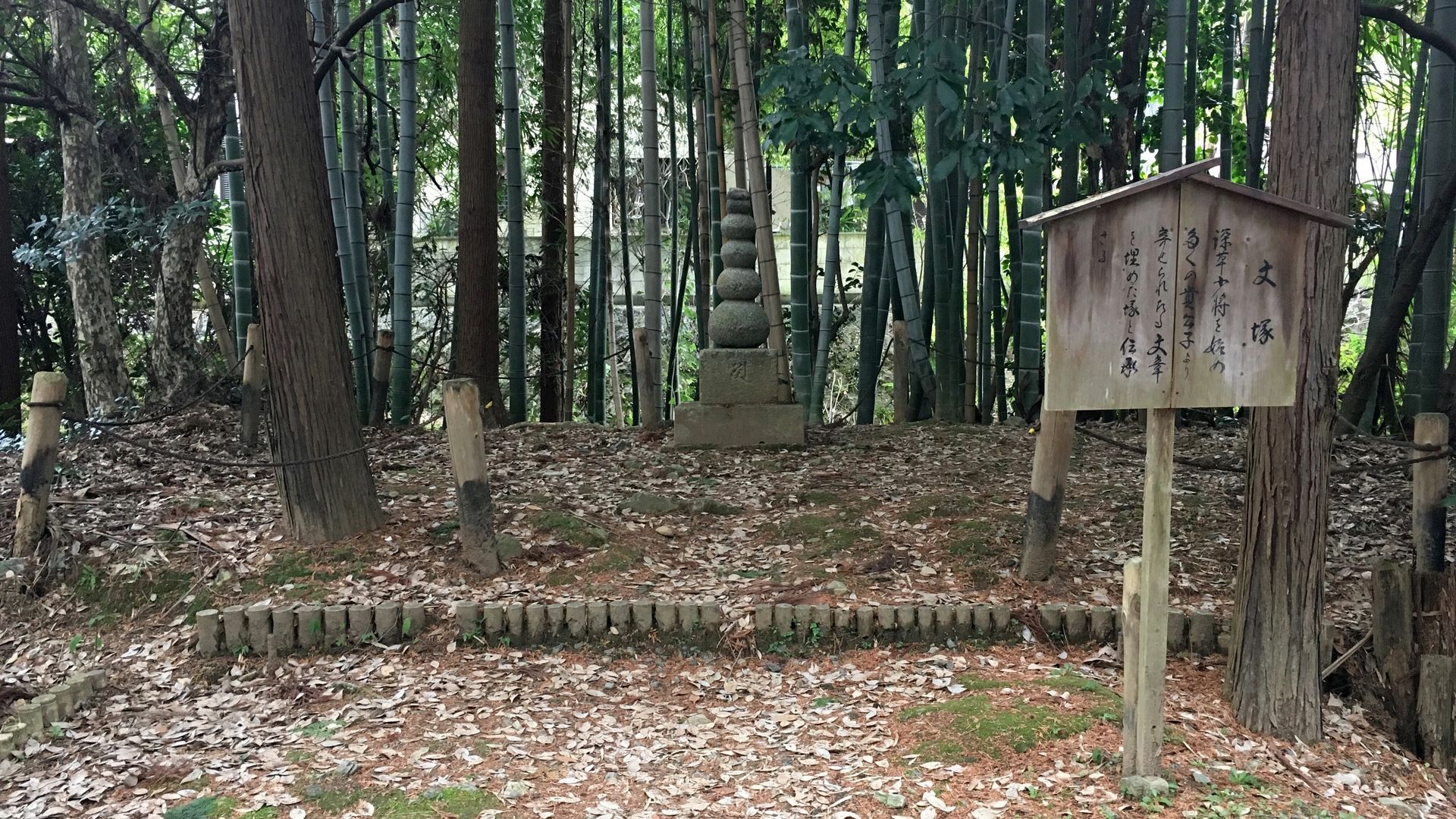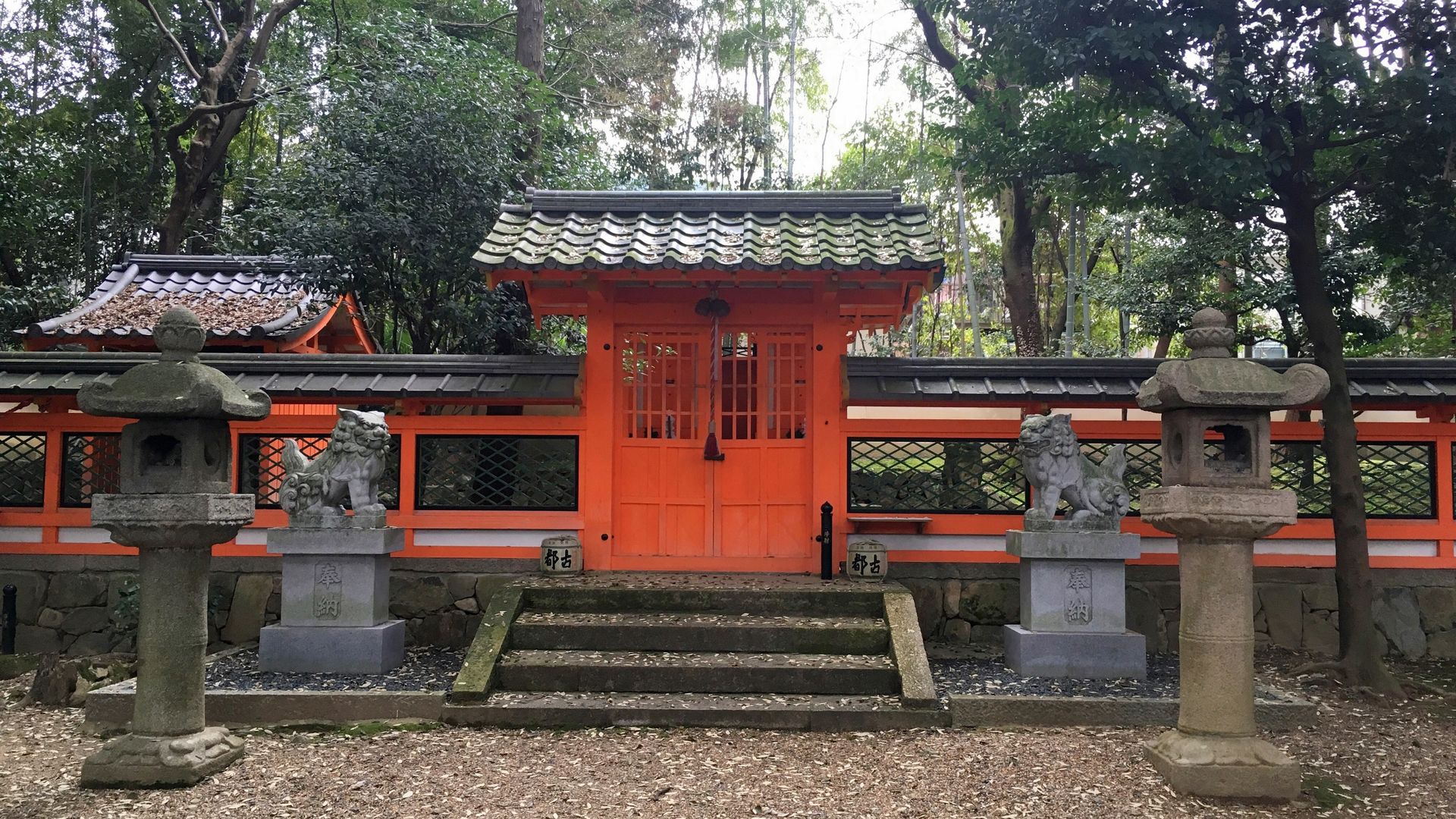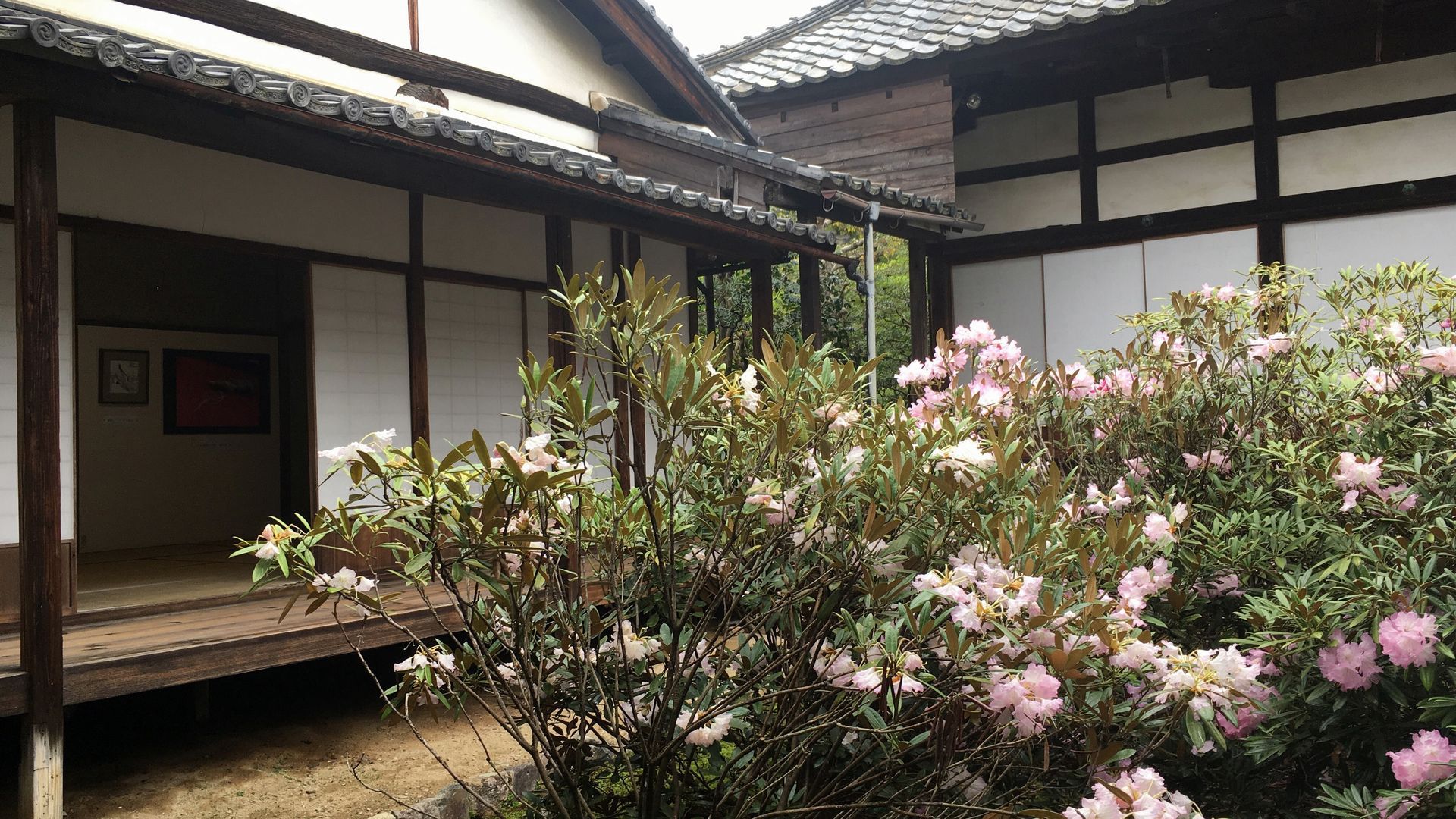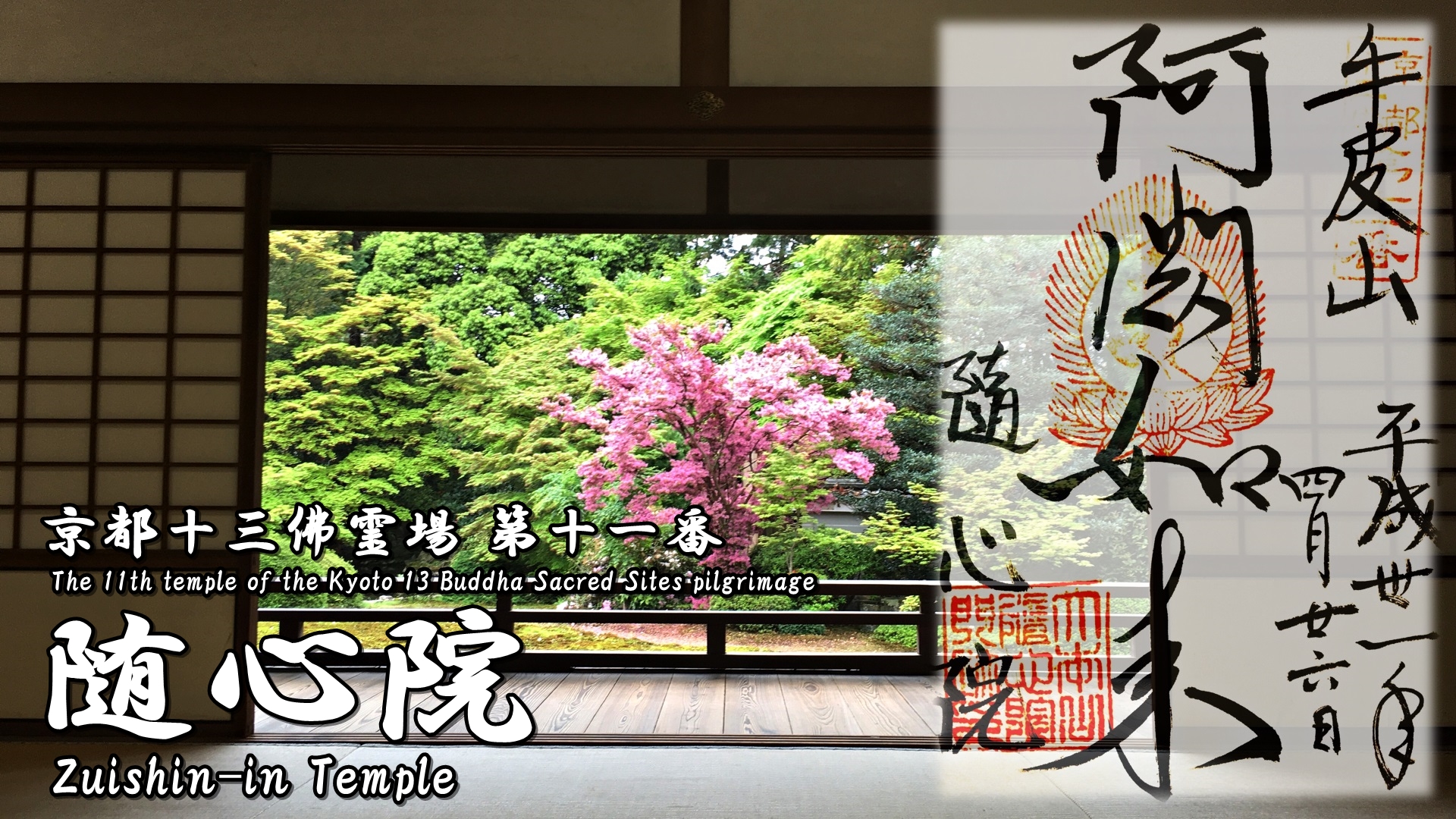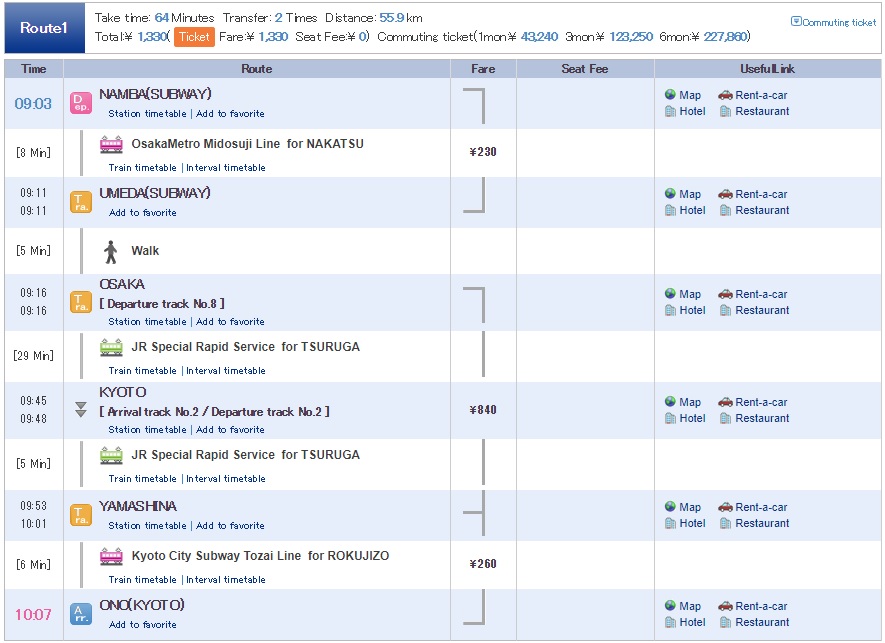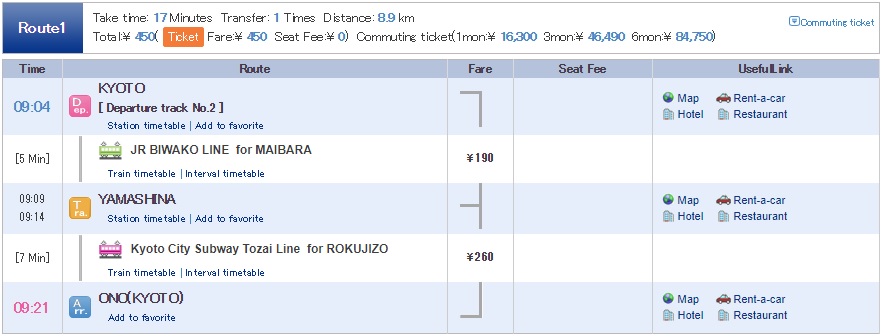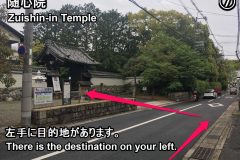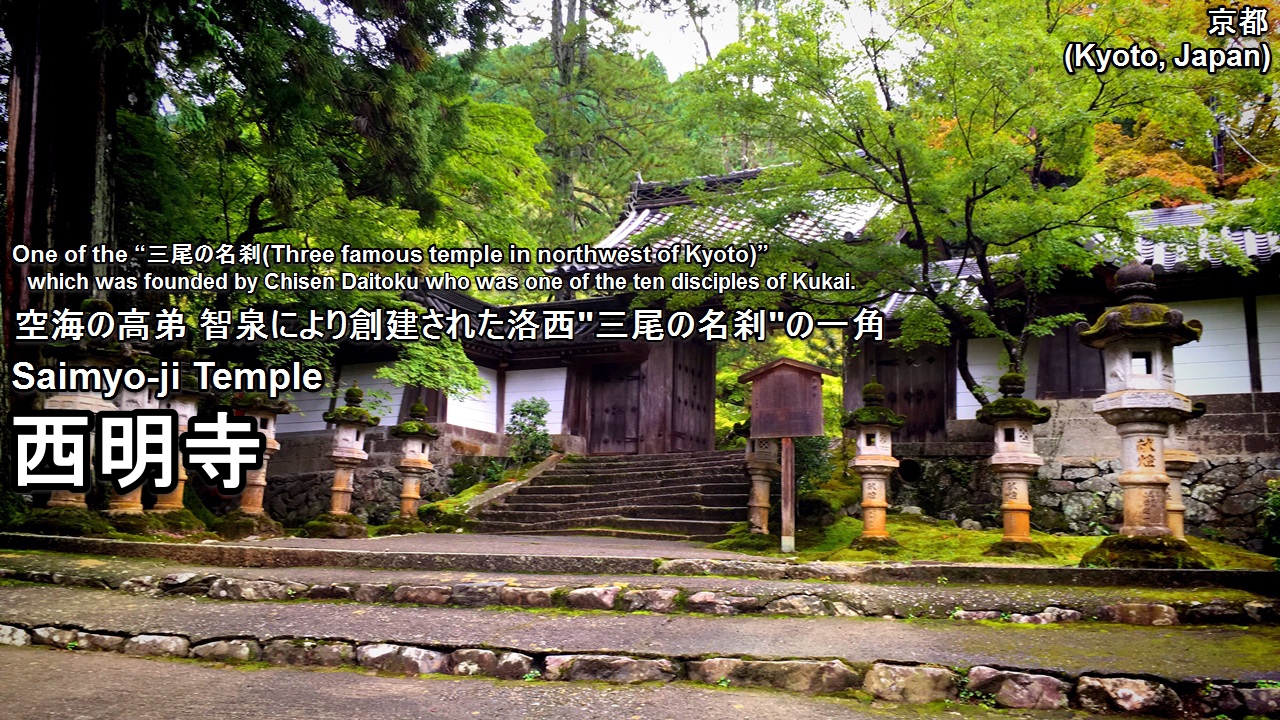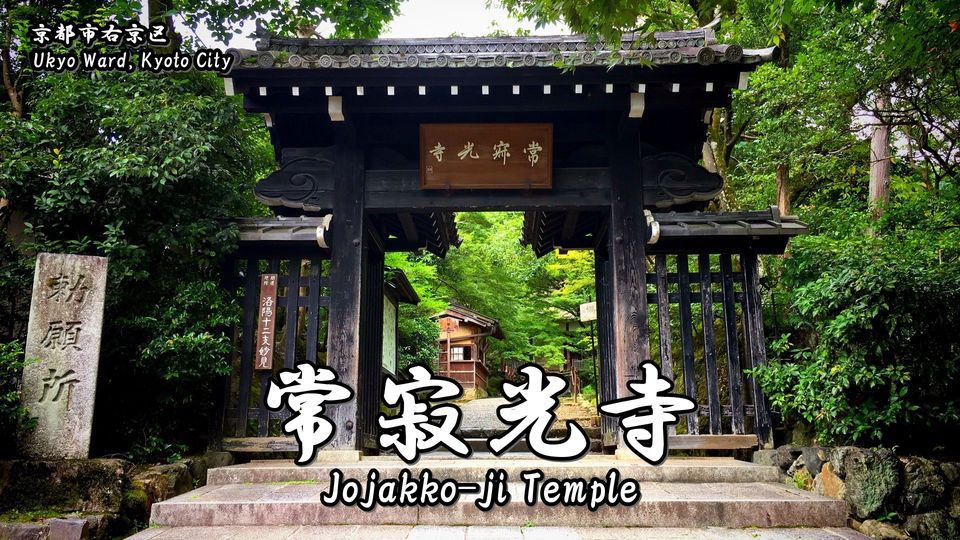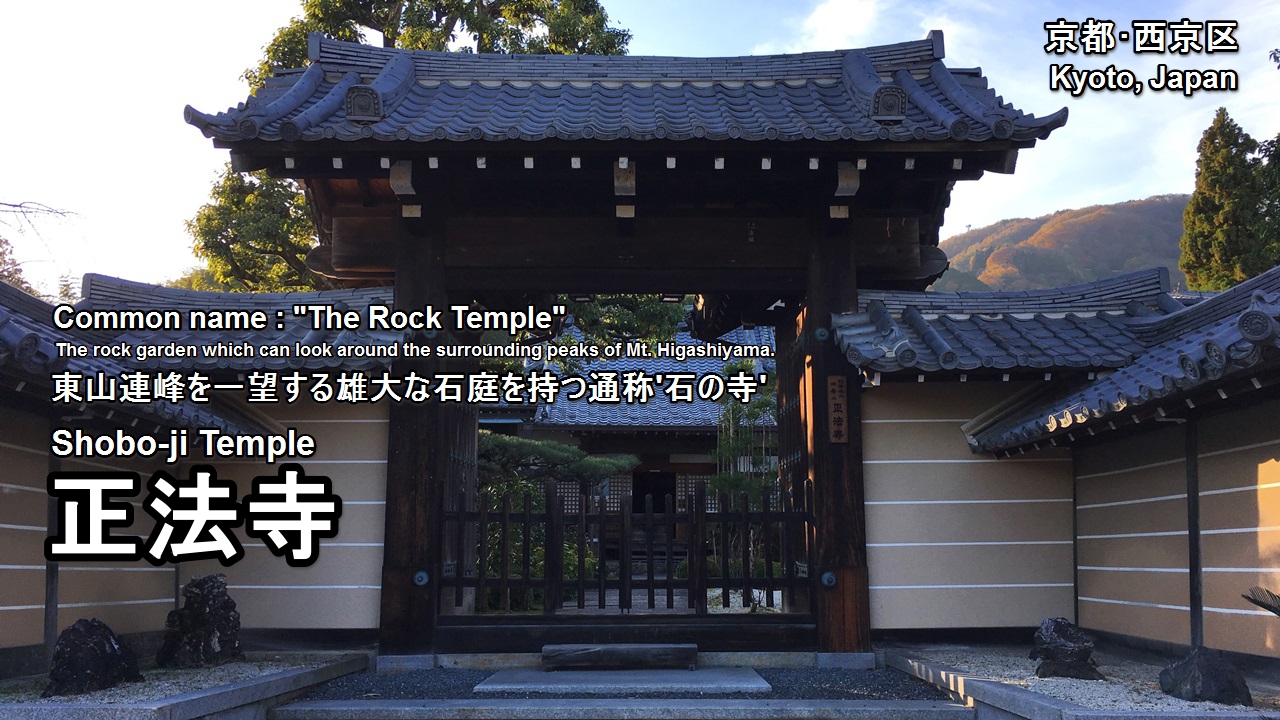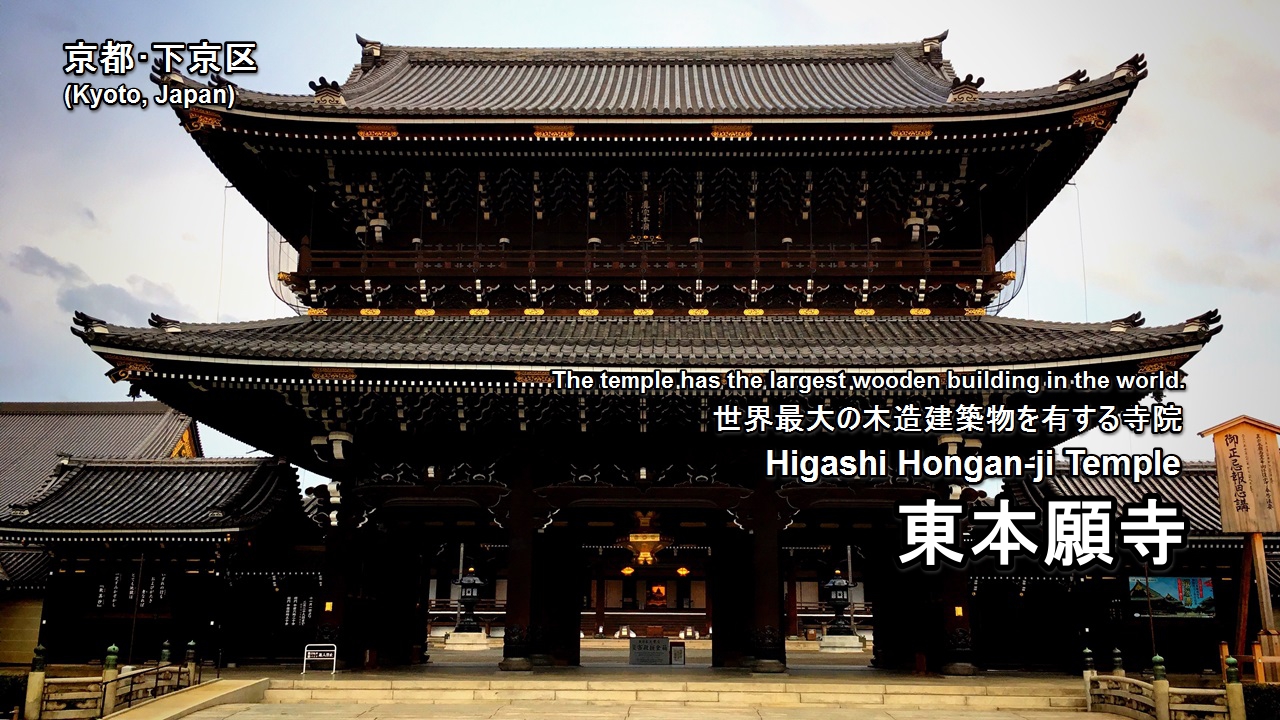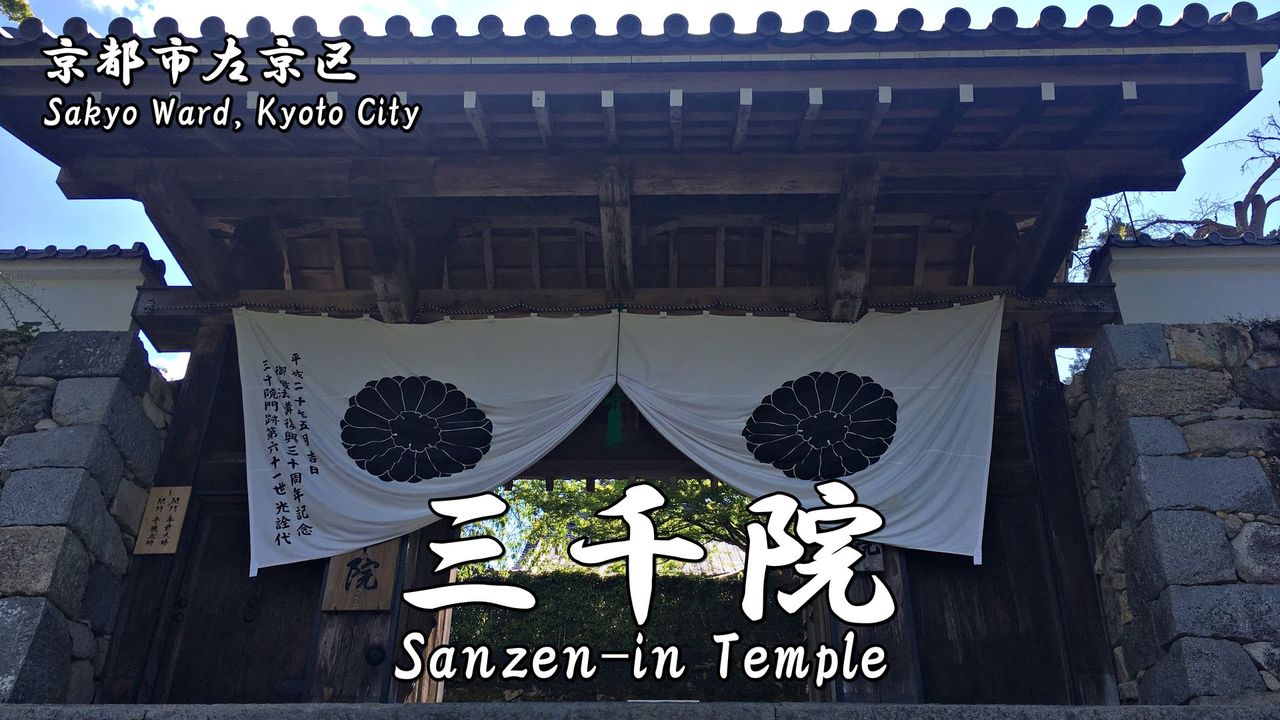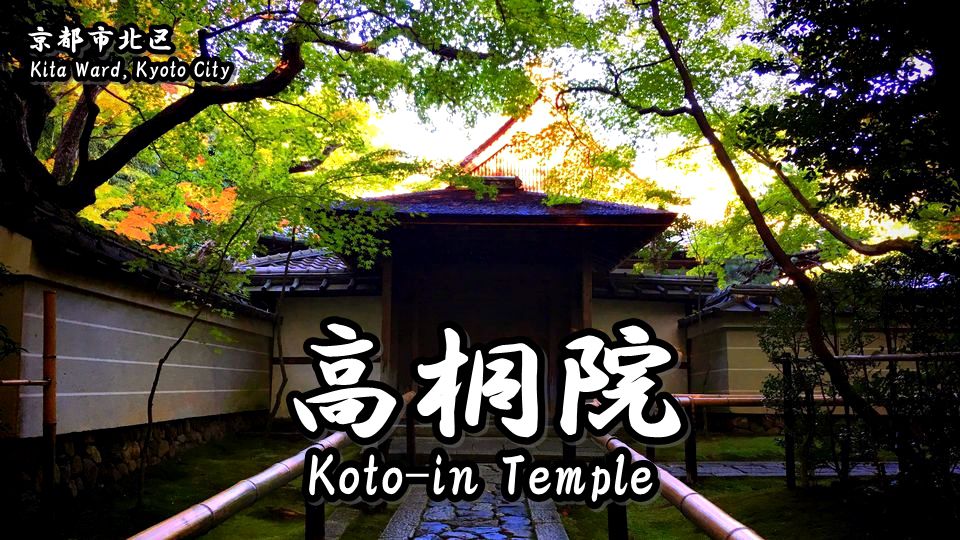Zuishin-in Temple is the head temple of the Zentsuji School of the Shingon Sect located in Yamashina Ward, Kyoto City.
The principal image (honzon) is Nyoirin Kannon (the Bodhisattva of Compassion).
The Ono area in which the temple is situated was the base of the Ono clan.
So this temple is known as the temple associated with ONO no Komachi (Ono clan).
Because the hair moss of the garden is very beautiful, it is also called ‘Mossy Temple in southeastern Kyoto’.
History of Zuishin-in
Let’s study the history of this temple with me.
I think that we can enjoy sightseeing of this temple more by learning the history of it. XD
Zuishin-in was founded in 991 of the Heian period by Ningai (仁海) who was the founder of the Ono school of the Shingon Sect.
Ningai performed a ritual for rain nine times in total at Kyoto a long time ago, at the time was believed to have brought rain.
So, he came to be known as ‘Ame Sojo (雨僧正 / Rain Priest).’
The original name of this temple was ‘Mandara-ji Temple (曼荼羅寺).’
It became a Monzeki Temple (a high ranking temple served by a head priest from the imperial or a noble family) by an imperial decree issued by the Emperor Gohorikawa in 1229, and came to be named ‘Zuishin-in Monzeki (随心院門跡).’
However, this temple was destroyed by fire during the Jokyu War (1221) and the Onin War (1467-1477).
The main hall of a Buddhist temple was rebuilt in 1599 of the Azuchi-Momoyama Period.
Information for visitors
website
Information
Address:35, Ono Goryocho, Kyoto Shi Yamashina Ku, Kyoto Fu, 607-8257, Japan
Phone:+81-75-571-0025
Foundation:991
Founder:Ningai (仁海)
Sect:Zentsuji School of the Shingon Sect (真言宗善通寺派)
Principal image:Nyoirin Kannon (如意輪観音)
Open
9:00~16:30
Admission fee
| Adults | Junior high student | |
| General period | 500 yen | 300 yen |
| Plum garden (early spring) | 500 yen | 300 yen |
During the special admission period, admission fee may change.
Other Informations
Inside the building, there are places where photography is prohibited. (Please follow the official’s instructions.)
The worship method of a shinto shrine and a buddhist temple, please refer to the following article.
Next, Let’s go to see the highlights of this temple with me!
Highlights of Zuishin-in
- 総門:So-mon gate
- 小野梅園【名勝】*:Ono plum garden【Places of Scenic Beauty】*
- 薬医門:Yakui-mon gate
- 長屋門:Nagaya-mon gate
- 歌碑:Monument inscribed with a poem
- 庫裏:Kuri
- 坪庭*:Courtyard*
- 大玄関*:Ogenkan*
- 表書院*:Omote Shoin (front drawing room)*
- 能の間*:Noh-no-ma (Noh room)*
- 庭園*:Garden*
- 本堂*:Hon-do hall*
- 中庭*:Courtyard*
- 奥書院*:Oku Shoin (inner drawing room)*
- 小町堂*:Komachi-do hall*
- 大乗院:Daijo-in Temple
- 化粧の井戸:Kewai-no-ido (The make-up well)
- 小町庭園:Komachi’s garden
- 小町文塚:Komachibumi-zuka
- 清瀧権現堂:Seiryu Gongen-do
- 仁海僧正供養塔:Memorial service pagoda for Ningai
This mark 「*」 is a pay area.
総門:So-mon gate
It was relocated from the Nijo Family‘s house in 1753 of the Edo period.
小野梅園【名勝】*:Ono plum garden【Places of Scenic Beauty】*
It is known as a famous spot for plum blossoms in Kyoto.
薬医門:Yakui-mon gate
It was constructed between 1624 and 1631 of the Edo period using funds donated by Tenshinin-ni (天真院尼) who was connected to the Kujo family.
長屋門:Nagaya-mon gate
歌碑:Monument inscribed with a poem
It is the monument inscribed with a poem of ONO no Komachi.
「花の色は うつりにけりな いたづらに わが身世にふる ながめせしまに」
‘Hana no iro wa Utsuri ni keri na Itazurani Wa ga mi yo ni furu Nagame se shi ma ni’
My figure has declined in grace while I was lost in thought of love and variety of things in the world, as well as the color of cherry blossoms has faded while I was lost in thought to no purpose with this long rain. (SIG English Lounge)
庫裏:Kuri
It was relocated from the Nijo Family‘s house in 1753 of the Edo period.
There is a Komachi’s portrait which was drawn with a textile in the hall at the entrance of the Kuri.
坪庭*:Courtyard*
A plant called rhododendron (石楠花) are planted in the courtyard.
(These flowers are best viewed from late April to early May.)
大玄関*:Ogenkan*
It was constructed between 1624 and 1631 of the Edo period using funds donated by Tenshinin-ni (天真院尼) who was connected to the Kujo family.
表書院*:Omote Shoin (front drawing room)*
It was also constructed between 1624 and 1631 of the Edo period using funds donated by Tenshinin-ni (天真院尼) who was connected to the Kujo family.
能の間*:Noh-no-ma (Noh room)*
It was constructed between 1753 and 1764 of the Edo period using funds donated by the Kujo family, and was repaired in 1991.
This is a fusuma picture in the Noh-no-ma.
Lifetime of the ONO no Komachi is drawn on this picture.
庭園*:Garden*
Because moss is a very beautiful, also called ‘Moss temple of Southeast Kyoto. (洛巽の苔寺)’
本堂*:Hon-do hall*
It was built in 1599 of the Azuchi Momoyama period.
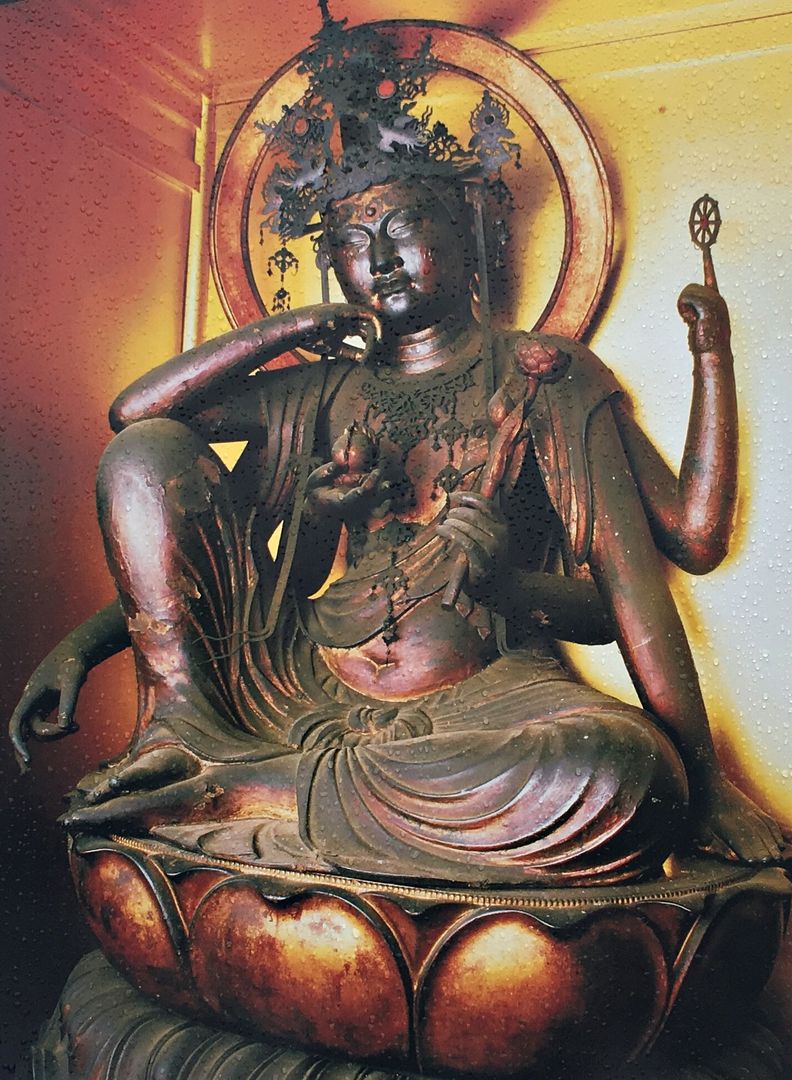
It is normally withheld from public view.
中庭*:Courtyard*
奥書院*:Oku Shoin (inner drawing room)*
小町堂*:Komachi-do hall*
This is a charnel house for women.
大乗院:Daijo-in Temple
This is a sub-temple of the Zuishin-in.
Enmei Jizo-bosatsu (延命地蔵菩薩) is enshrined in the precincts.
化粧の井戸:Kewai-no-ido (The make-up well)
This is a well at the residence of ONO no Komachi.
‘Kewai’ has the meaning of ‘makeup’.
It is said that she wore makeup using this well.
小町庭園:Komachi’s garden
小町文塚:Komachibumi-zuka
It is said that a lot of love letters which Komachi got from men is buried here.
清瀧権現堂:Seiryu Gongen-do
Seiryu Gongen (清瀧権現) who is a separated deity of Daigo-ji Temple is enshrined in the precincts.
仁海僧正供養塔:Memorial service pagoda for Ningai
It is a memorial service pagoda of Ningai (仁海) who is the founder of this temple.
Flowers of Zuishin-in
Zuishin-in is also famous for its plum blossoms and rhododendron blossoms.
The best season of plum blossoms is late February – early March.
The best season of rhododendron blossoms is late April – early May.
Video of Zuishin-in
Photo of Zuishin-in
Goshuin (Red ink stamps) of Zuishin-in
Zuishin-in’s red ink stamp (goshuin), ‘Mandaraden (曼荼羅殿).’
The 11th temple of the Kyoto 13 Buddha Sacred Sites pilgrimage’s red ink stamp (goshuin), ‘Ashuku Nyorai (阿閦如来)’
How to get to Zuishin-in
The nearest station is Kyoto City Subway Tozai-Line Ono Sta.
It is about 10 minutes on foot from Ono Sta.
From Osaka Sta. (by train)
Timetable and Route Search (train)
1.Get on the JR Kyoto Line from Osaka Station to Yamashina Station.
2.Change to the Kyoto City Subway Tozai Line at Yamashina Station.
3.Get on the Kyoto City Subway Tozai Line from Yamashina Station to Ono Station.
From Namba Sta. (by train)
Timetable and Route Search (train)
1.Get on the Osaka Metro Midosuji Line from Namba Station to Umeda (Osaka) Station.
2.Change to the JR Kyoto Line at Umeda (Osaka) Station.
3.Get on the JR Kyoto Line from Osaka Station to Yamashina Station.
4.Change to the Kyoto City Subway Tozai Line at Yamashina Station.
5.Get on the Kyoto City Subway Tozai Line from Yamashina Station to Ono Station.
From Kyoto Sta. (by train)
Timetable and Route Search (train)
1.Get on the JR Biwako / Kosei Line from Kyoto Station to Yamashina Station.
2.Change to the Kyoto City Subway Tozai Line at Yamashina Station.
3.Get on the Kyoto City Subway Tozai Line from Yamashina Station to Ono Station.
From Ono Sta. (on foot)
It is about 10 minutes (700 meters) on foot from Ono Sta.
Take a taxi
From Kyoto Station:about 3600 yen (25 minutes)
From Gion-Shijo Station:about 3300 yen ~ (20 minutes)
・Let’s show a taxi driver the following phrase.
・If you want to call a taxi, let’s show the following phrase.
[Phone number of taxi dispatch : Around the Kyoto Station]*Japanese text only.
Hotel search & reservation
How did you like it?
Have a nice trip! XD

